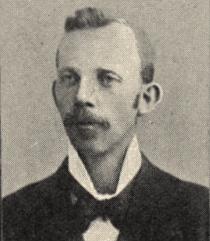
Archibald Leitch
One of sport’s most hallowed shrines turns a hundred today.
As the The Sporting Chronicle stated on Saturday 19th February 1910 after the inaugural match between Man Utd and Liverpool.
“The most handsomest, the most spacious and the most remarkable arena I have ever seen. As a football ground it is unrivalled in the world, it is an honour to Manchester and the home of a team who can do wonders when they are so disposed.
The correspondent from The Umpire was bowled over by the pristine playing surface and wrote: “I know groundsmen who would weep at the mere thought of using such a perfect pitch for so reckless a game, but football knows no sentiment.”
United’s first-ever line-up at Old Trafford was as follows – Harry Moger; George Stacey, Vince Hayes; Dick Duckworth, Charlie Roberts, Sam Blott; Billy Meredith, Harold Halse, Tom Homer, Sandy Turnbull, George Wall.
It was a losing start as Man Utd fell to Liverpool but over the years Old Trafford proved rightly to be “The Theatre of Dreams” as it was called by Bobby Charlton.
The new venue was built for the then princely sum of £60,000 ($92,290) with a standing capacity of 80,000. The most recent expansion plans if they materialize will increase the seating capacity to 95,000 and could cost an estimated £100 million or more, in comparison.
Perhaps it was Archibald Leitch, the Glasgow born architect of Old Trafford who began the inextricable link between the neigbours to the north and shaping the fame and fortune of this historic club. Sir Matt Busby and Sir Alex Ferguson are fellow Scottish travellers who have found success in Leitch’s creation.
Old Trafford was not the only stadium to have Leitch’s imprimatur. His hand can be found at the Ibrox, Villa Park, and Craven Cottage. He also designed stands at Stanley Park, Goodison, and White Hart Lane. He also helped in Arsenal’s move to Highbury. Thus, the sobriquet of father of football stadia is richly deserved. His contribution is richly captured in Simon Inglis “Engineering Archie.”
Soccerblog joins in paying tribute to the Mecca of English football.